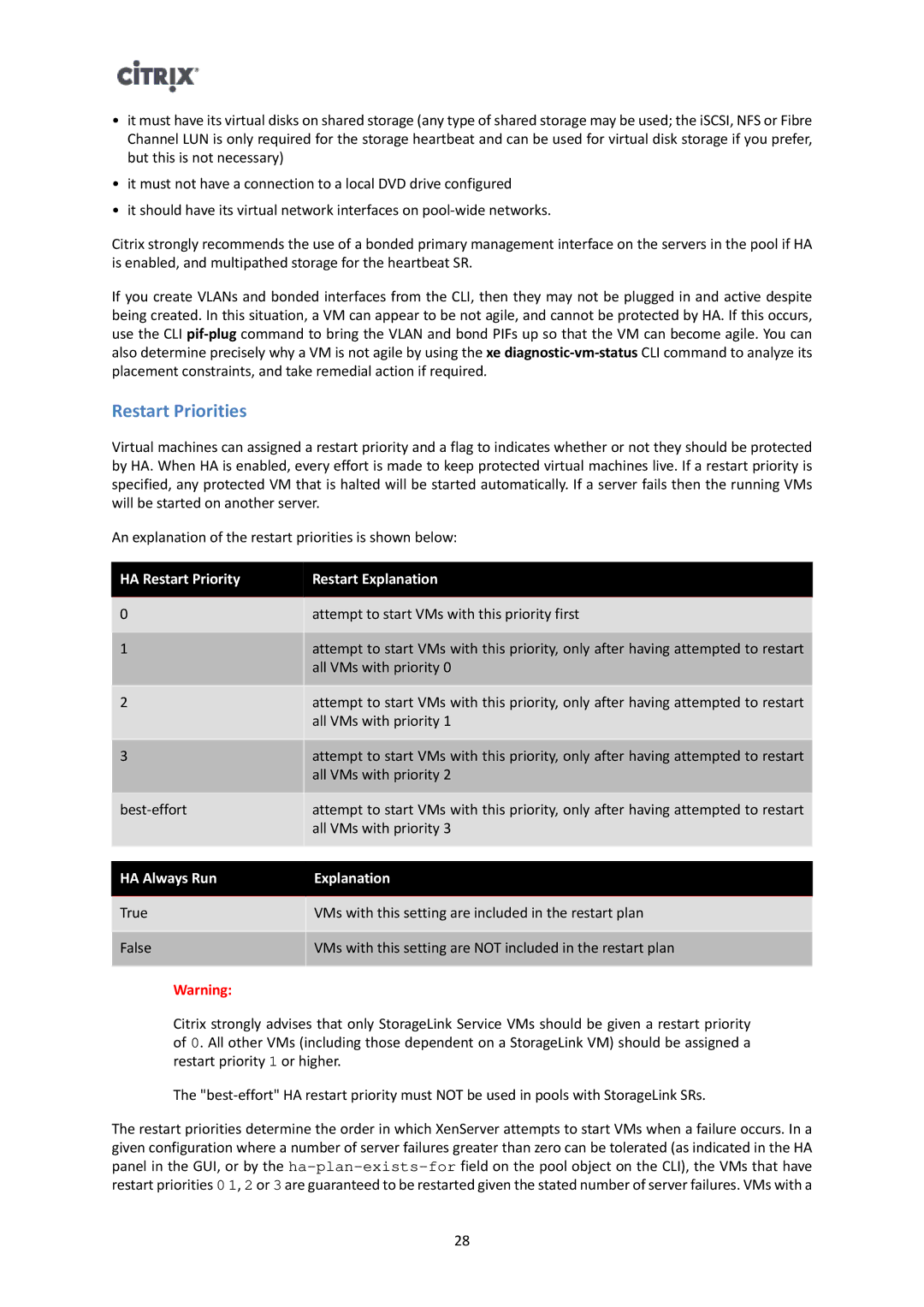
•it must have its virtual disks on shared storage (any type of shared storage may be used; the iSCSI, NFS or Fibre Channel LUN is only required for the storage heartbeat and can be used for virtual disk storage if you prefer, but this is not necessary)
•it must not have a connection to a local DVD drive configured
•it should have its virtual network interfaces on
Citrix strongly recommends the use of a bonded primary management interface on the servers in the pool if HA is enabled, and multipathed storage for the heartbeat SR.
If you create VLANs and bonded interfaces from the CLI, then they may not be plugged in and active despite being created. In this situation, a VM can appear to be not agile, and cannot be protected by HA. If this occurs, use the CLI
Restart Priorities
Virtual machines can assigned a restart priority and a flag to indicates whether or not they should be protected by HA. When HA is enabled, every effort is made to keep protected virtual machines live. If a restart priority is specified, any protected VM that is halted will be started automatically. If a server fails then the running VMs will be started on another server.
An explanation of the restart priorities is shown below:
HA Restart Priority
Restart Explanation
0 | attempt to start VMs with this priority first |
|
|
1 | attempt to start VMs with this priority, only after having attempted to restart |
| all VMs with priority 0 |
|
|
2 | attempt to start VMs with this priority, only after having attempted to restart |
| all VMs with priority 1 |
|
|
3 | attempt to start VMs with this priority, only after having attempted to restart |
| all VMs with priority 2 |
|
|
attempt to start VMs with this priority, only after having attempted to restart | |
| all VMs with priority 3 |
|
|
HA Always Run
Explanation
True
False
VMs with this setting are included in the restart plan
VMs with this setting are NOT included in the restart plan
Warning:
Citrix strongly advises that only StorageLink Service VMs should be given a restart priority of 0. All other VMs (including those dependent on a StorageLink VM) should be assigned a restart priority 1 or higher.
The
The restart priorities determine the order in which XenServer attempts to start VMs when a failure occurs. In a given configuration where a number of server failures greater than zero can be tolerated (as indicated in the HA panel in the GUI, or by the
28
